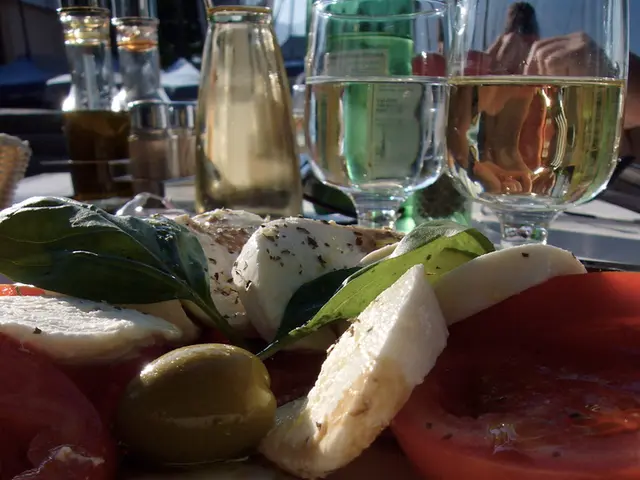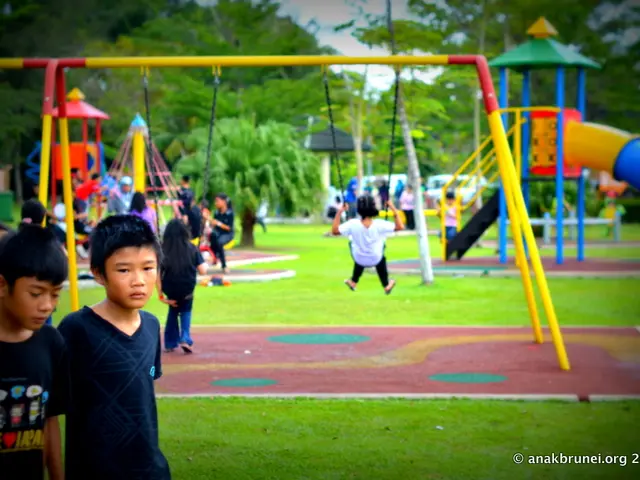The Street Marks the Boundary of Summer's Arrival and Departure: A Narrative of a Nation That Wavers Between Bite-sized Treats and Beverages
In the heart of Spain, a unique culinary and cultural experience awaits travellers - the humble roadside bar. These establishments, scattered along highways and byways, have become beloved stops for tourists and locals alike, offering a taste of authentic Spanish flavours and social interactions that enrich the summer vacation experience.
For instance, Andrés López has been managing the Abades-Puerta de Andalucía restaurant since 2009, providing comfort and good food to weary travellers on the A-8 in Cantabria. Further south, Sandra's bar, located in a bustling town, sells more than 700 sandwiches in a day during the peak summer months, catering to the hunger of travellers in a hurry.
Roadside bars on the A-2 as it passes through Lleida serve more than 300 meals a day, while Bar La Hacienda, situated at kilometer 272 of the A-6, prepares with over a hundred kilos of bread, 50 liters of coffee, 400 bottles of water, and hundreds of packages of Astorga mantecadas daily. These establishments understand the needs of travel-weary patrons, offering sustenance to open the appetite.
These bars are not just places to eat and drink; they are stages for unwritten stories. Moments spent here, even if they last twenty minutes, stay with us all year. Many roadside bars serve as witnesses to life's milestones - breakups, reconciliations, family announcements, and goodbyes.
In San Sebastián, a gastronomic hotspot, pintxos bars line the streets, featuring plates of small snacks encouraging casual dining with friends. This style of dining is more about socializing than just consuming food, a hallmark of the Spanish summer lifestyle. Similarly, El Rinconcillo, the oldest tapas bar in Seville dating back to 1670, offers an authentic experience of jamón and wine that embodies centuries of Spanish culinary tradition.
These roadside bars are part of a broader Spanish tradition that includes customs like "La Siesta," a midday rest to avoid working in the high summer heat, emphasizing the relaxed rhythm of life that shapes both tourists’ and locals’ summer vacation experiences. Although there are high-end restaurants growing in popularity, especially among British tourists, traditional roadside bars remain integral to Spain’s summer tourism by offering accessible, authentic local flavors and social interactions outdoors or street-side.
The most popular roadside bars in Spain for travellers are often traditional pintxos bars found especially in regions like San Sebastián and historic tapas bars such as El Rinconcillo in Seville. These roadside or local bars play a significant role in the Spanish summer vacation experience by serving as social hubs where people gather to enjoy small, elaborately prepared snacks (pintxos) along with drinks, fostering social connection and relaxation during warm afternoons and evenings.
The best praise for these bars is not that one remembers them, but that one returns. There's something deeply ours in stopping at roadside bars during vacations. The spirit of Abades-Puerta de Andalucía remains comfort, good food, and a pleasant moment. A waitress at one of the Mediterranean motorway bars, Rosa, has worked there since she was 18 and once helped deliver a letter to a man named Sergio.
Since the pandemic, there has been an increase in tourism at Abades-Puerta de Andalucía, reflecting the enduring appeal of these establishments. In fact, Serapio Fraile, from Juanito restaurant in La Roda, Albacete, has saved a customer's life by performing the Heimlich maneuver, highlighting the personal connections that can be formed in these places.
Roadside bars in Spain are more than just pit stops; they are a cherished part of the country's cultural fabric. They offer a unique blend of food, drink, socializing, and the cherished local pace of life, making them beloved stops for travellers that enrich the cultural fabric of summer vacations.
These roadside bars offer an average taste of authentic Spanish lifestyle and cuisine, providing a unique blend of food-and-drink, socializing, and travel experiences. The best praise for these establishments is not that one remembers them, but that one returns, as they continue to play a significant role in enriching the cultural fabric of summer vacations.




